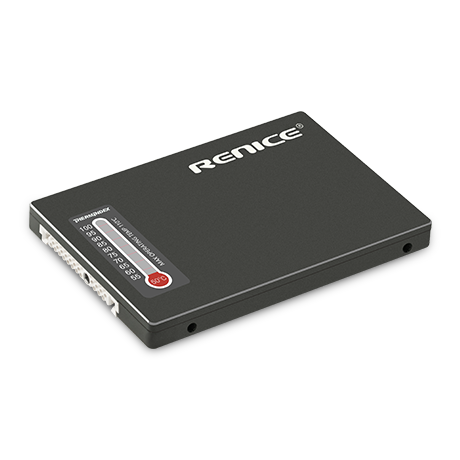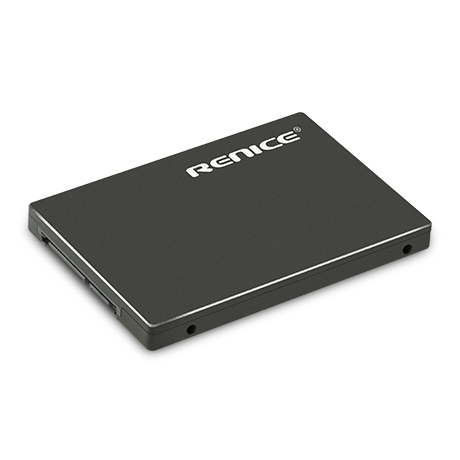What is the difference between Industrial SSDs and Consumer SSDs?
To be precise, industrial SSDs differ from consumer SSDs, just as million-dollar Mercedes-Benz differs from $5,000 Tata cars. The essential difference is not in speed (both can run to 200 kilometers per hour at high speeds), but in safety and reliability.
Watch the video of the traffic accident and you will understand how important "Safety" is. When you're either picking up your car at a 4S shop or on the way to a 4S shop every week, you'll understand how much "Reliability" really is.
The root cause of the difference between safety and reliability lies in the difference in design and the choice of materials. For SSDs with the same capacity and even the same master controller, depending on the design and material selection, the cost can vary several times or even more than ten times!
The design of consumer SSD is to pursue performance and save costs. It can use 4-layer boards, never choose 6-layer boards, and save all the materials that can be saved.
The design of industrial SSD put reliability first. When the 10-layer board can be used, it will never be reduced to 8-layer board, and the material selection is only industrial grade or better.
It is these design differences that make the difference between consumer and industrial SSDs.
1. Operating Temperature
For industrial SSDs, the operating temperature of -40°C~+85°C is the most common requirement, -55°C~+125°C is not new. And commercial SSDs only require an operating temperature of 0°C to 70°C.
In low temperature or high temperature environment, the electrical performance changes greatly. In addition to requiring all components to be at least industrial grade, industrial products also have extremely high requirements for PCB wiring and board selection.
Anyone with engineering experience knows that for ordinary PCB materials, after more than 2 times of high temperature baking (for example: 260°C), the PCB will appear bubbling, and the cracks between the layers of the circuit board will lead to poor wiring connections. For some materials, the copper skin will peel off when the chip is repaired.
The materials selected for industrial products do not have any problems under the same conditions. One simple and direct way to judge the quality of the PCB board material is: put the PCB in a 260°C oven and bake it repeatedly until the surface of the PCB becomes mushy and still has no bubbles, which is a qualified material.
2. Reinforcement Processing
2.1 Underfill Technology
Generally speaking, consumer products do not know what reinforcement is and what it does, while industrial grade SSDs are reinforced from the chip.
First, the bottom of the chip is filled with underfill and then cured by heating at 160 °C. The underfill can not only bond between the PCB and the chip, but also completely exhaust the air between the chip pins, preventing the oxidation of the chip pins in the future. At the same time, it can also play a waterproof role.
The cost of one German underfill is about US$220, and each chip needs to be glued through the glue dispenser, placed at a 45° angle for 30 minutes, let the glue infiltrate until the air is emptied, and then heated. The whole gluing process takes more than 1 hour.
2.2 Ruggedized Connector
Connectors such as SATA generally use a planar contact structure. This structure is simple to manufacture and low cost, and is commonly used in SSDs.
However, if there is a strong vibration or shock environment, there will be temporary poor contact on the plane contact, resulting in loss of signal or data. Therefore, industrial products often use specially customized ruggedized SATA interfaces.
Renice High Reliable Rugged SATA Connector

Ruggedized connector will not cause poor contact when shock or vibration occurs in any direction. And the cost of the Ruggedized connector is more than 100 times that of the ordinary flat SATA connector.
Of course, it is also a common reinforcement method in the industry to reinforce the shell, etc.
Related Solution: Renice X9 2.5 inch R-SATA SSD

3. One-click Self-destruction
Consumer products usually have no special functional requirements, while industrial products require data destruction under various conditions for security reasons.
The design of physical destruction is not as simple as adding some circuits. Because flash memory has its own protection circuit, it is difficult to destroy. At the same time, the flash memory of different manufacturers is different, which increases the difficulty of destruction.
It usually takes a lot of experiments to ensure that all the chips are destroyed, and each experiment is a very expensive R&D expense. The R&D cost of a perfect product should be enough to offset the sales profit of dozens of thousands of inferior SSDs.
Click to learn more functions: https://www.renice-tech.com/product-features.html
4. Reliability
The reliability of the SSD needs to be considered comprehensively. A large number of tests and verifications and constant bug correction are essential processes.
However, commercial SSDs do not need to consider so many processes, and the production process only requires SMT and aging tests. In Shenzhen, where the industrial chain is developed, some people provide PCBA, simple manual soldering, card opening, aging test, and then the products can be sold online.
How to deal with inferior reworked products? Simply, reissue the card and sell it to another person. If the Nand is broken, replace one or several Nands directly, and continue to sell after opening the card.
Therefore, reliability is supported by the cost!
Industrial SSDs cannot be produced at the price of consumer SSDs. Price is always proportional to quality.

